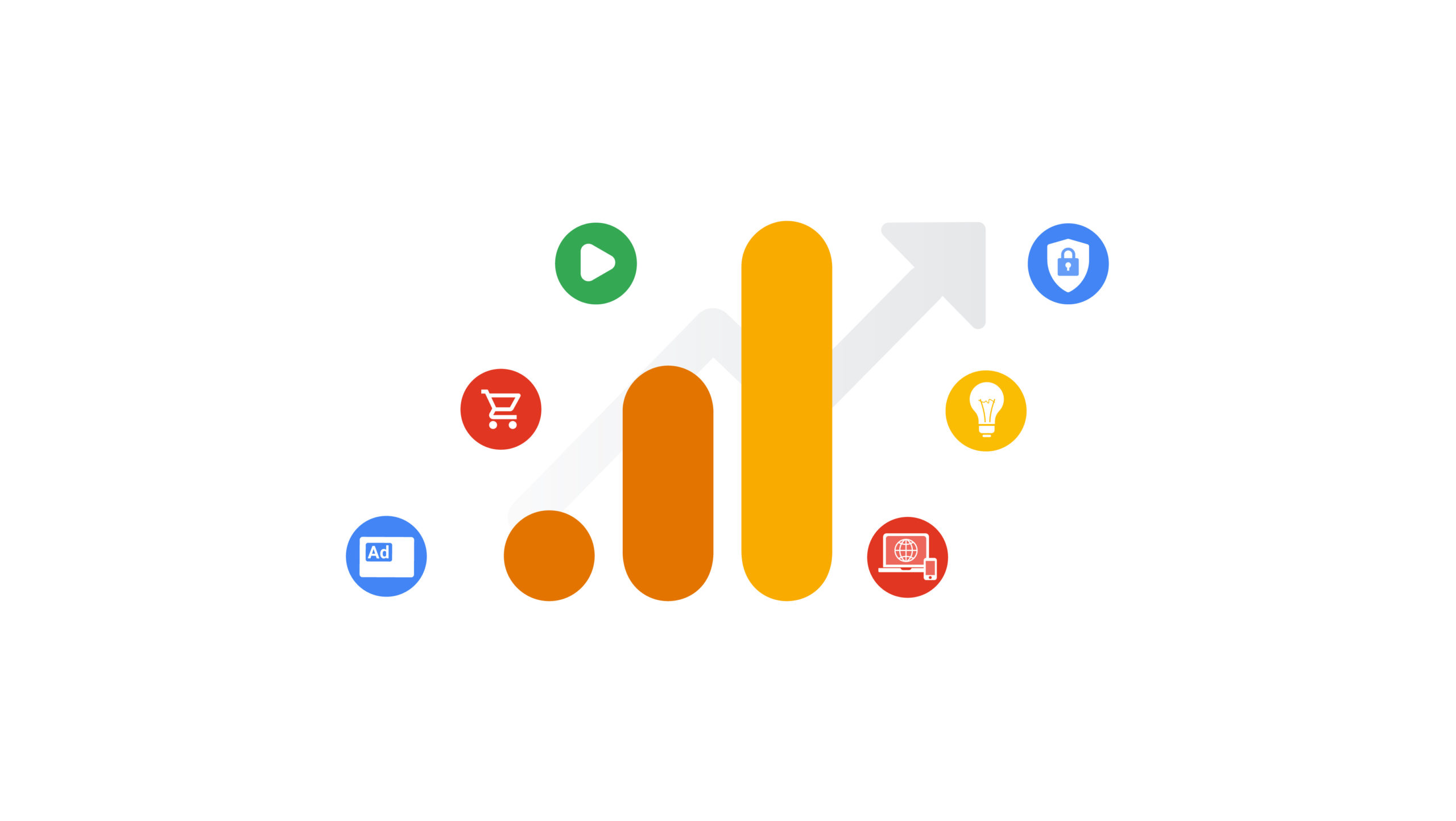
26 Apr Goodbye, UA: Set Up Google Analytics 4 Now for Success
Did you get the email this month encouraging you to “Manage Your Google Analytics 4 Setup”? It’s Google’s not-so-subtle nudge for you to transition to GA4 before they sunset Universal Analytics on July 1, 2023. Introduced more than a year ago, this change is a long time coming. And the lead time gives online marketers the much-needed chance to adopt and adapt.
“It’s finally time to push past the hesitancy and concerns about GA4’s user-friendliness,” says Mat Threadgill. “The change is happening, so put on a smile, set up GA4, and gather data for a full year before it’s the only way — even if it’s clunky at first.”
Old data from Google UA will only be stored for six months after the platform is closed, but not ported over after that. Universal Analytics 360 users will have until October 1, 2023, to make the switch. Either way, earlier adoption of GA4 means a smoother transition and retention of a year’s worth of historical data.
Why the change from UA to GA4?
In November 2020, Threadgill gave marketers a heads up about GA4. As a refresher, the motivation behind the new tool is improved operation across platforms (desktop, mobile, websites, apps, etc.) in a cookieless, holistic user-journey model.
Google will use machine learning and AI to predict and capture insights via “events” (called “goals” in UA) while protecting user privacy. Greater customization of reports will ideally offer a bigger picture of the user experience.
Features Marketers Will Love
Experts caution that GA4 is a completely new animal, not simply an update to Universal Analytics. “The good news is, as digital marketers, we’re all in the same boat of learning a whole new system. We also have time to learn this new tool,” Google Analytics expert Colleen Harris writes.
Any big transition involves growing pains, but marketers are already talking about ways GA4 will better inform their communication with customers. In addition to cross-platform website/app tracking, below are some additional GA4 features that marketers are excited about.
Tracking: Beyond page views and clicks, the tracking capabilities are enhanced. From either desktop or mobile, you can track if a user scrolls down a page, clicks a button, downloads a file, logs in, and more. You can track audience-based conversions, not just page or event conversions.
Custom and Trended Funnels: GA4 helps you follow a user’s path, such as the steps from page view to eCommerce shop to cart to purchase. You can run reports on funnels to track the most successful campaigns.
Reports: Your GA4 home page provides a quick summary of traffic, conversions, and revenue, plus a link to the Realtime Report. Search Engine Journal dives deep into reports, including the comprehensive new Analysis Hub.
Predictive analysis: With machine learning, GA4 offers predictive metrics on customers based on event data. Discover purchase probability, churn probability (for active users in the last 7 days who won’t return in the next 7 days), and predicted revenue (from active users from the last 28 days expected to purchase in the next 28 days).
Setting up GA4 — when and how?
The “when” is simple: Now. Run GA4 alongside Universal Analytics so you can compare the tools. Capture data in the familiar platform while you familiarize yourself with GA4.
For the “how-to” setup of GA4: If you received the email from Google, simply follow the prompts. Search Engine Journal also offers these easy steps for configuring the new GA4:
- Login to your Google Analytics Account.
- Click Admin Gear icon, bottom left navigation.
- Confirm that your desired account is selected.
- Confirm the desired property is selected.
- Click GA4 Setup Assistant, the first option in the Property column.
- Once in the Setup Wizard, click the “Get Started” button.
- Click the blue button to “Create property.”
Voila! Enhanced measurement will automatically activate and collect events (read more about events here). Don’t just install GA4 and forget it — start setting up funnels and reports so you can play around with data customization.
Getting the most out of GA4
The earlier you implement Google Analytics 4, the sooner you start capturing important data and maximizing its features. In a recent survey, a majority of marketers (70%) plan to implement GA4 internally, while 14% are going to hire outside help.
If you need assistance getting into the nitty-gritty of Google Analytics 4, contact The Threadgill Agency. Our team can help you set up reports and analyze pertinent information for your marketing strategy and ROI.
